Given its appearance on pretty much every bucket list of “cities you must visit in your lifetime”, you couldn’t exactly call Rome an underrated city. But in my opinion, it totally deserves the hype that it gets. If I had to pick my all-time favourite city in the world to visit, it would probably be Rome.
Just because I love Rome, doesn’t mean I’m blind to its problems. And it certainly has its share of those. Like any heavily touristed city, Rome is crowded, busy, chaotic, and not always as clean as you might like it to be.
And as the bustling capital of a wealthy nation, Rome is not a cheap place to visit. With that said, I’ve learned a few little tips and tricks to save money when I visit the Eternal City. Some people call me cheap. I prefer to think of myself as extremely selective in what I will and won’t spend money on. So here’s what I have learned about how to visit Rome on the cheap, this is the cheapskate guide to Rome.
Getting There
They say all roads lead to Rome. But not all roads are equally expensive. Even before you get to Rome, there are ways to save yourself a few euros.
Fiumicino
If you’re coming to Rome from the US, chances are you will land at Rome’s major airport, Fiumicino, also known as Leonardo da Vinci. A taxi from there to the centre of Rome is going to cost you an eye-watering €48. These prices are set by the city, by the way, so don’t let a taxi driver charge you a penny more.
Wouldn’t you rather spend that cab fare on a delicious pasta dish or entrance to one of the world’s best museums? I know I would. Luckily, there is a train that you can take from Fiumicino to the centre of Rome. The Leonardo Express departs from Fiumicino’s train station every 15 minutes and takes you to Termini, Rome’s central train station, in half an hour. At €14 per person, the Leonardo Express is significantly cheaper than a taxi.
But a true cheapskate isn’t content until they know they got the cheapest possible option. There are other trains that leave Fiumicino’s train station and will take you to Rome. These other trains are used by locals, including those who work at the airport and don’t want to spend €14 just getting to work.
Unlike the Leonardo Express, these commuter trains are not direct, but make multiple stops along the way on their 45-minute journey into Rome. Also, these trains do not stop at Termini but instead stop at some of Rome’s other railway stations, the main ones being Ostiense and Tiburtina.
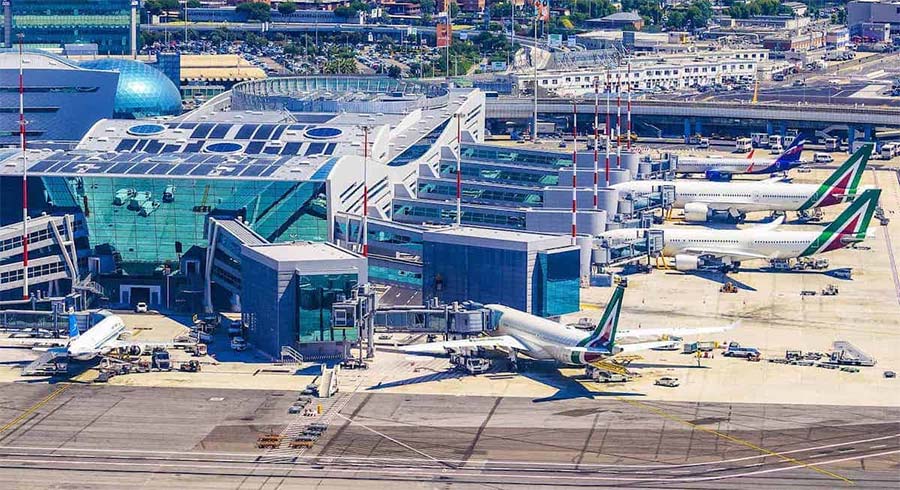
Depending on where in Rome you are staying, these stations might even be more convenient for you. But even if they’re not, both of these stations are served by Rome’s generally underwhelming subway system. And when the ticket from Fiumicino only costs eight euros, you can afford the €1.50 for a ride on the Metro.
These trains are kind of run down and don’t look nearly as nice as the shiny Leonardo Express. If you are carrying a lot of luggage, it may not be worth the hassle. But if you travel light and aren’t in a huge hurry, these commuter trains can save you quite a bit of money.
Ciampino
If you fly to Rome from within Europe, especially if you’re using a budget airline like I always do, it’s more likely you’ll end up at the smaller Ciampino airport. A taxi from here to the centre of Rome officially costs €30, and even then, a lot of taxi drivers will try to charge you more, even though it’s illegal. Ciampino airport doesn’t have its own train station.
The town of Ciampino does have a train station, but to get to that from the airport requires a bus. You’re probably better off simply taking a bus from Ciampino into Rome. There are a few different companies offering this service, but you shouldn’t pay more than around five euros for the ride.
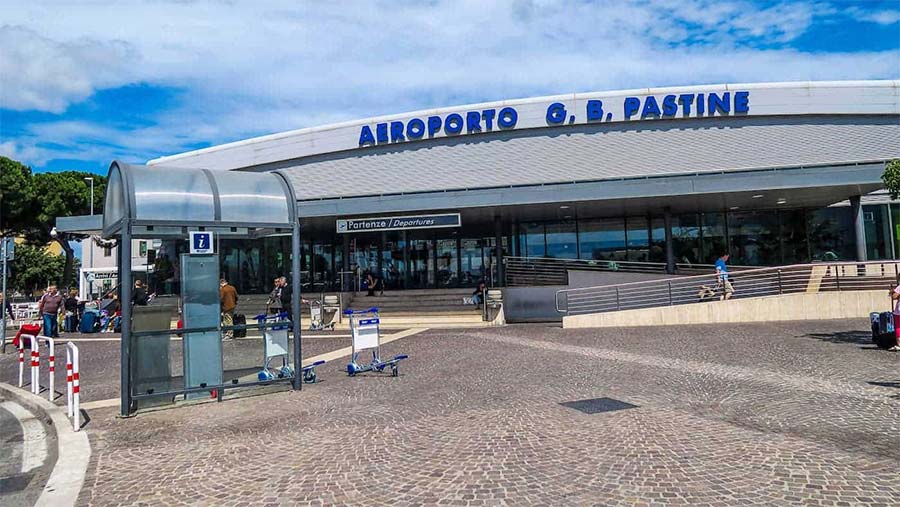
Art
You can’t go to Rome and not see some of the spectacular art that the city holds. But those museum entrance fees can sure add up. Fortunately, due to the historical power of the papacy, lots of Rome’s best art can be found in the multitude of churches in the city. And those are generally free to enter.
We’re talking masterpieces by major artists like Michelangelo, Caravaggio, Bernini, Bramante and Rafael. And all these incredible works of art will cost you is perhaps a single euro to turn the lights on.
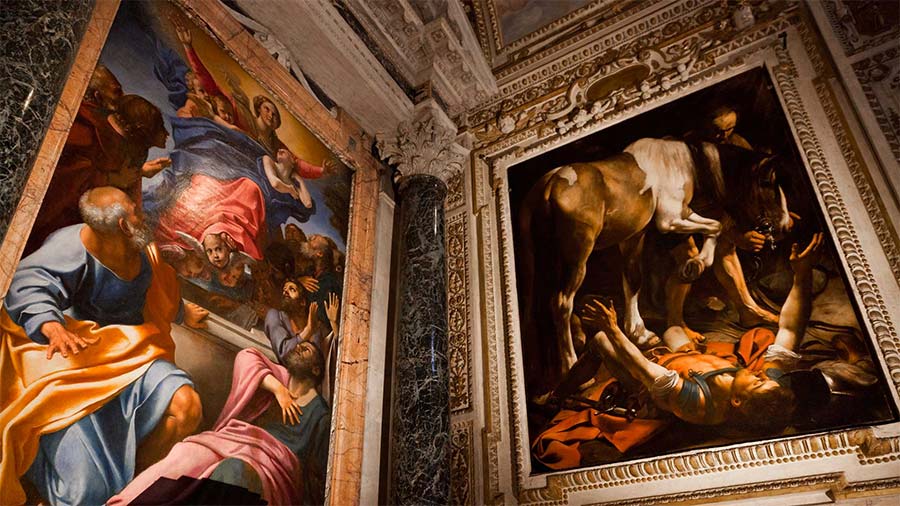
Enjoy these Caravaggio paintings for free at Santa Maria dei Popolo
Free Sundays
There are certain attractions in Rome that you simply have to go to. It’s impossible to imagine Rome without the Coliseum, for instance. And the Vatican museums, including the world-famous Sistine Chapel, are also high on the must-do list. But guess what? Visiting these magnificent places doesn’t have to cost you a penny.
On the first Sunday of every month, the Italian government opens the doors of the heritage monuments it owns to everyone without charging for admission. Just in Rome, the list of these monuments would be far too long to put in this post. But it includes the Coliseum and the Roman Forum, as well as the Borghese Gallery, the Barberini Gallery, the Baths of Caracalla and so many more.
You could easily spend an entire day visiting the most impressive monuments of the Roman Empire without spending anything.
Fortunately, St. Peter’s Basilica is always free to visit. The same can’t be said about the awe-inspiring Vatican museums, including Michelangelo’s Sistine Chapel. But on the final Sunday of the month, this world-leading museum is also free to enter. With a little planning, it’s possible that your visit to Rome could include both of these free Sundays. Okay, so there are going to be crowds. But these free Sundays can really stretch your budget in Rome.
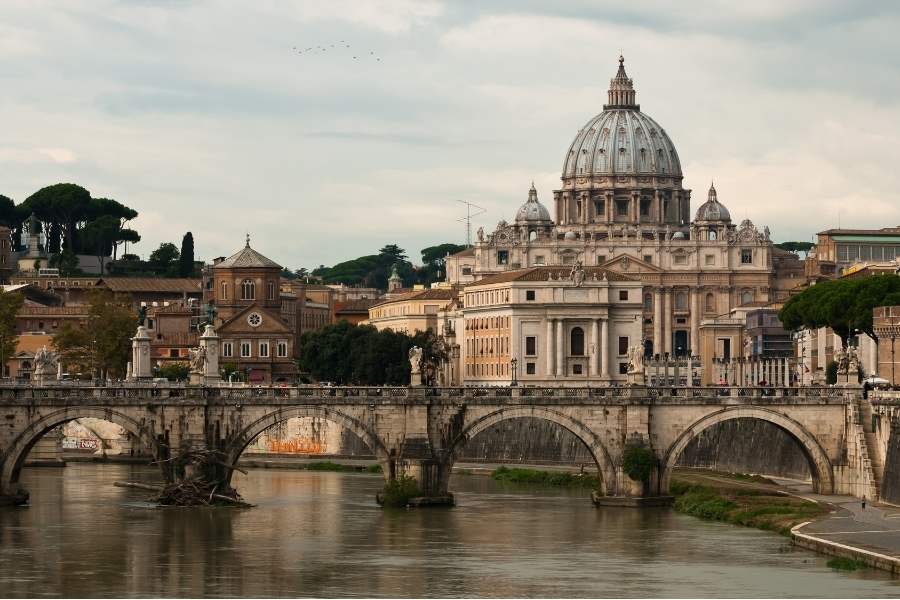
Food
I’m not for a minute suggesting that you go to Rome and not eat in some of the cities reliably fantastic restaurants. Food is a huge part of Italian culture, and Rome is no exception. It would be a travesty to miss out. With that said, be careful where you eat.
The restaurants in the shadows of the major tourist attractions, such as the Vatican and the Coliseum, are often not even close to the quality of restaurants a little further out.
Not only that, but you’ll be paying a lot more for poorer-quality food. In general, try to avoid anywhere that advertises its menu in multiple languages, or uses pictures of its food. These places are tourist traps to be avoided. A short walk down the road will almost invariably find better restaurants that will give you a more authentic experience at a cheaper price.

Pasta Amatriciana
While we’re on the subject of food: how much do you really need to eat? The restaurants of Rome love to tempt you in with the offer of a three-course meal including an appetizer, a pasta dish and a main, with possibly even a dessert to follow. Eating like that on a regular basis will destroy your bank balance even quicker than it destroys your waistline.
Consider instead making one of your daily meals a little lighter. Although it sometimes seems as though Rome is one giant tourist attraction, Italy’s capital is in fact a real working city, and there are locals who live there, even within the ancient walls. Rome does have supermarkets where you can pick up items for a picnic lunch for very reasonable prices. They just take a little scouting out. Google Maps is your friend.
And it’s hard to imagine a better city on earth than Rome in which to have a picnic lunch. Rome’s famous piazzas can turn a cheap lunch from a grocery store into a decadent feast.

Pizza al Taglio – Pizza cut the Roman way
The same goes for water. Rome is full of public water fountains of which the locals are justifiably proud. There’s no need to constantly buy expensive bottled water in the heat of a summer’s day. Just keep a bottle with you and fill it up whenever you find a fountain. You’d be surprised how much money such a simple thing can save you.
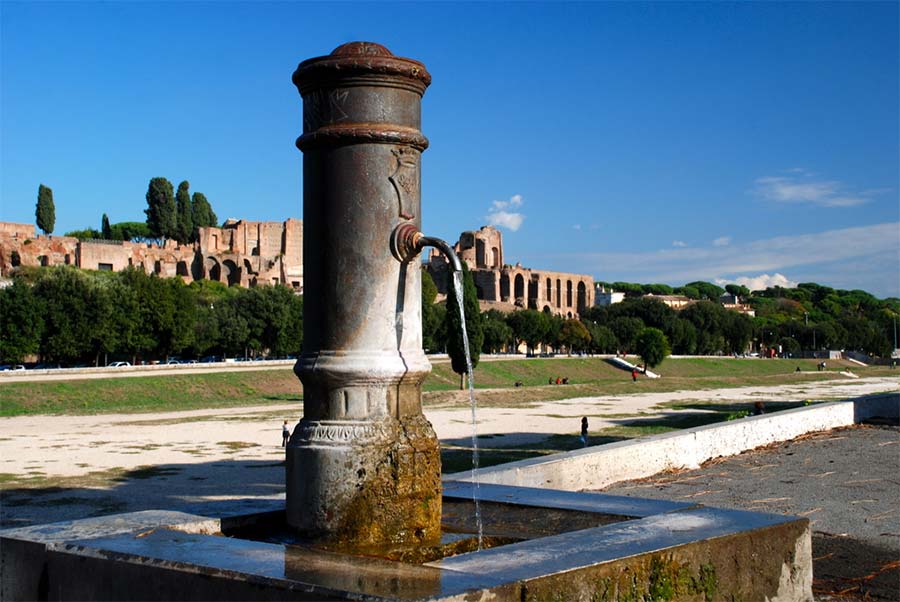
So here was my cheapskate guide to Rome. It’s undeniably one of the world’s most beautiful cities, but that doesn’t mean it has to break the bank. A little bit of planning and a willingness to try new things can make your trip to Rome cheaper than you ever imagined. With the money you save, you can start planning your return visit.
Italy Digital Nomad Visa
Do you dream of staying longer in Italy beyond the 90 days per 180 days of a Schengen Visa. At the start of April 2024 Italy launched its long-awaited Italy Digital Nomad Visa. You can read more about it here:
Italy Digital Nomad Visa – Requirements and Application Process


















